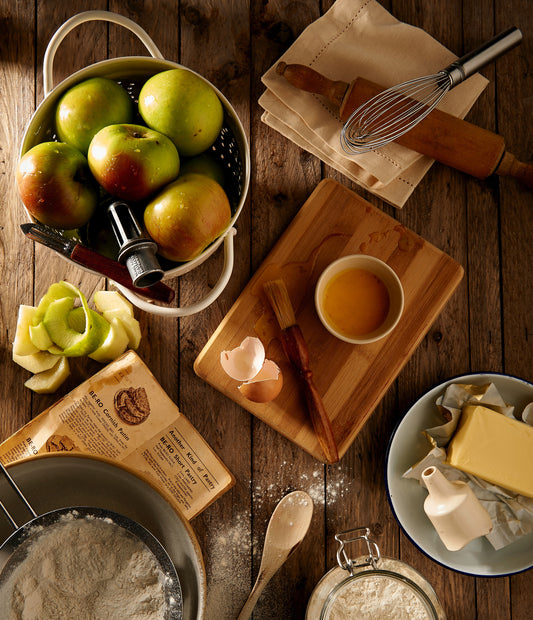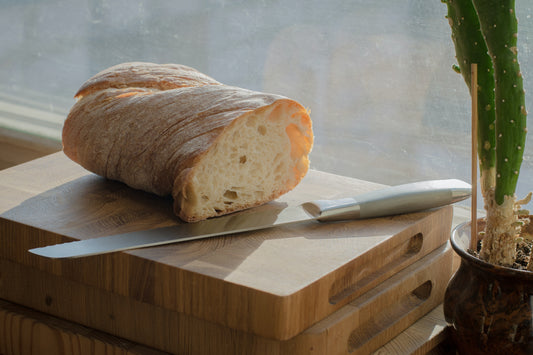Photo by Aleksei Ieshkin on Unsplash
A well-maintained cutting board is essential for safe and efficient food preparation in the kitchen. Proper care not only prolongs the life of your cutting board but also ensures a hygienic surface for your culinary adventures. In this step-by-step guide, we will walk you through the process of cleaning, oiling, and caring for your cutting board, helping you maintain its longevity and optimal performance.
Step 1: Cleaning Your Cutting Board
-
Gather Supplies:
- Mild dish soap or a mixture of equal parts water and white vinegar
- Clean sponge or soft brush
- Clean, dry cloth or paper towels
-
Rinse the Cutting Board: After each use, rinse your cutting board with warm water to remove any food debris or residue. Avoid using hot water, as it can damage the wood.
-
Clean with Soap: Apply a small amount of mild dish soap on the cutting board and use a clean sponge or soft brush to scrub the surface gently. Make sure to clean both sides of the board thoroughly.
-
Rinse Again: Rinse off the soap with warm water, ensuring no soapy residue remains.
-
Dry Properly: Pat the cutting board dry with a clean cloth or paper towels. Allow it to air dry upright to prevent moisture from getting trapped underneath.
Step 2: Oiling Your Cutting Board
-
Choose the Right Oil: Food-safe mineral oil or specialized cutting board oil (e.g., walnut oil or coconut oil) are ideal choices. Avoid using vegetable oils as they can turn rancid over time.
-
Apply the Oil: Ensure your cutting board is completely dry before oiling. Using a clean cloth, apply a generous amount of oil to the entire surface of the cutting board, including the sides.
-
Let it Soak: Allow the oil to soak into the wood for at least a few hours, or preferably overnight. This will help rehydrate the wood and prevent it from drying out.
-
Wipe Off Excess: After the soaking period, use a dry cloth to wipe off any excess oil from the cutting board. Leaving too much oil on the surface can make it sticky.
Step 3: General Cutting Board Care Tips
-
Avoid Submerging: Never submerge a wooden cutting board in water or run it through the dishwasher. Excessive exposure to water can cause the wood to warp or crack.
-
Sanitize with Vinegar: To sanitize your cutting board naturally, create a solution of equal parts water and white vinegar. Spray or wipe this mixture onto the board, let it sit for a few minutes, then rinse and dry as usual.
-
Use Separate Boards: Consider using separate cutting boards for different types of food, like one for meats and another for fruits and vegetables, to prevent cross-contamination.
-
Regularly Rotate: If you use your cutting board frequently, rotate its sides to distribute wear and tear evenly.
Conclusion:
Maintaining your cutting board is a simple yet crucial aspect of a well-equipped kitchen. Regular cleaning, oiling, and proper care will keep your cutting board in top-notch condition, providing you with a safe and reliable surface for all your culinary endeavors. Follow this step-by-step guide to DIY cutting board maintenance, and you'll enjoy the benefits of a well-preserved cutting board for years to come.




